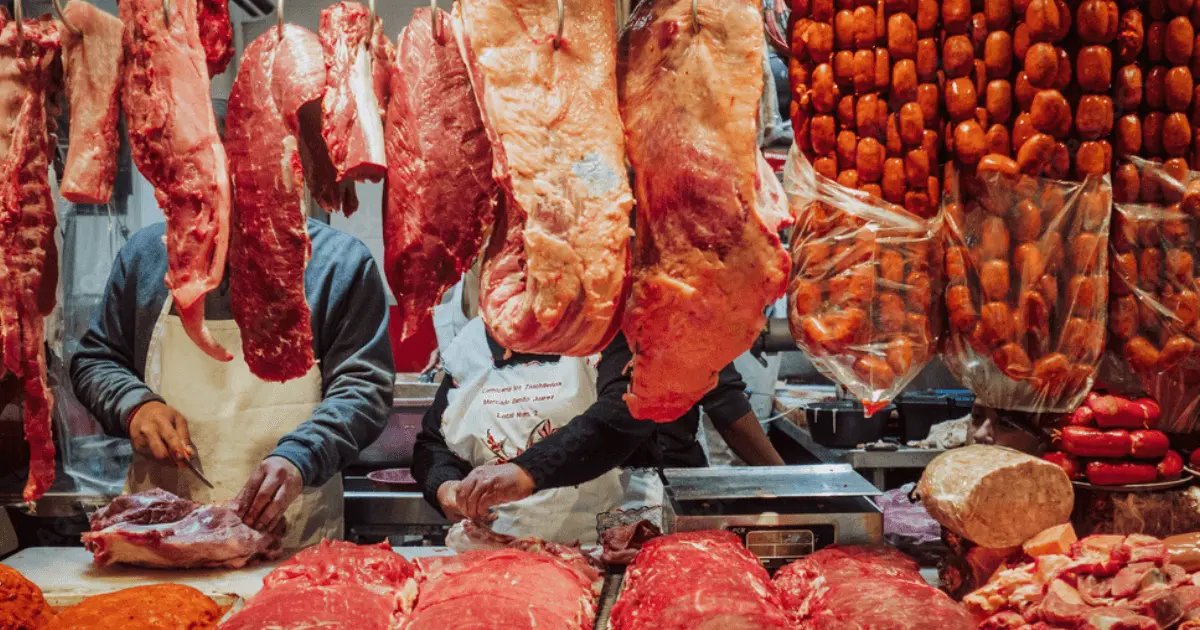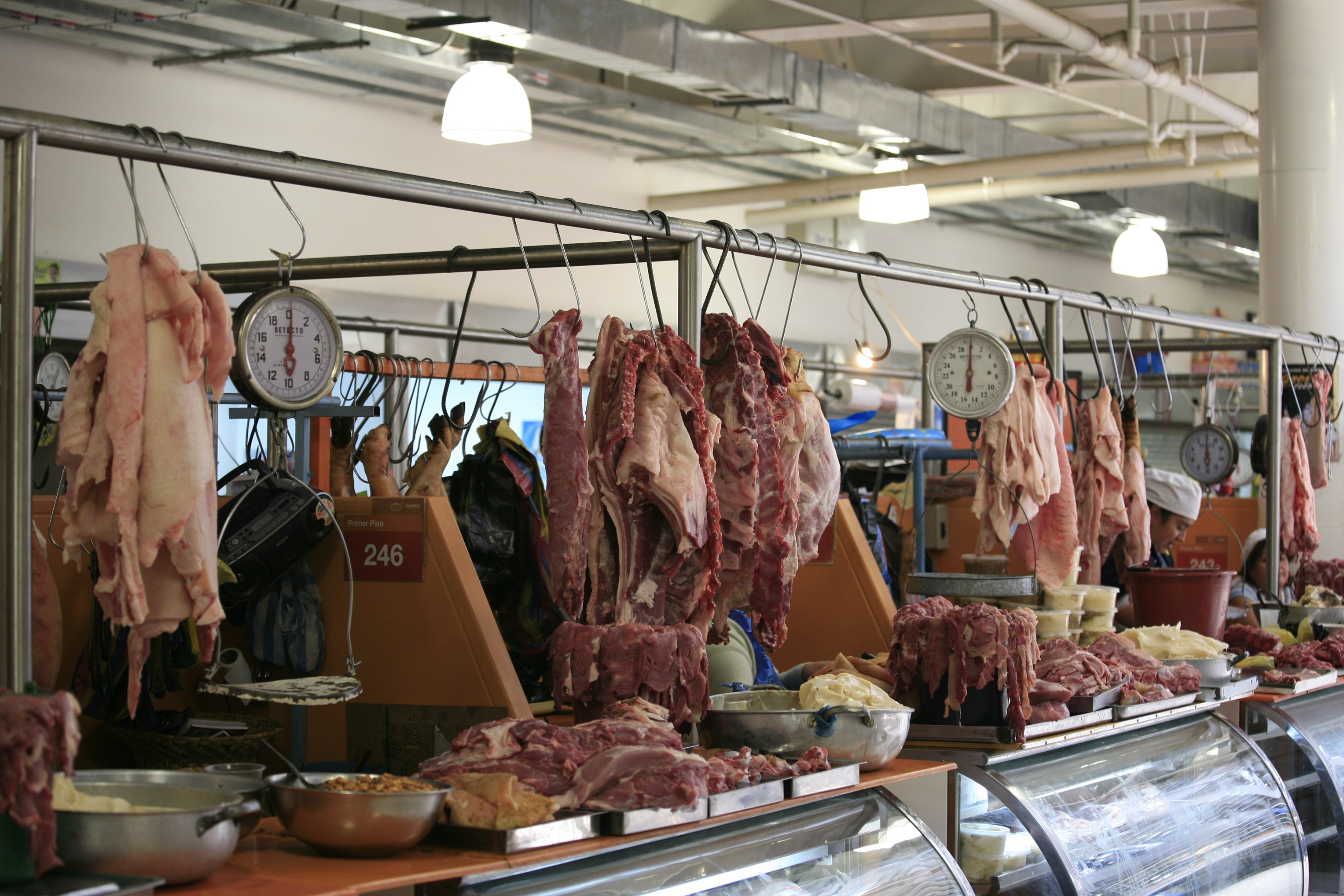See Bagley Farms Meat Market Edwardsville IL for Farm-Fresh Meat and Specialty Cuts
See Bagley Farms Meat Market Edwardsville IL for Farm-Fresh Meat and Specialty Cuts
Blog Article
Uncover the Art of the Butcher's Cut in a Modern Meat Market
In the ever-evolving landscape of modern meat markets, the butcher's cut has transcended its conventional roots, merging old-time workmanship with modern methods. bagley farms meat market edwardsville il. Today's butchers are not just processors of meat; they are well-informed craftsmens that stress sustainability and ethical sourcing. Their competence in choose and preparing cuts customized to specific culinary requirements uses an unrivaled dining experience. What genuinely sets the modern butcher apart is their capability to build a deeper link in between consumers and the origins of their meat. Exactly how do these masters balance practice with development, and what effects does this have for the future of meat consumption?
Advancement of Butchery Methods

The mid-20th century saw butchery techniques further refined by clinical insights right into muscular tissue biology and meat aging, boosting both inflammation and preference. Advancements like vacuum cleaner packaging and refrigeration extended product shelf-life, allowing butchers to diversify offerings and improve quality control. This duration additionally marked the increase of specialized devices, such as band saws and meat slicers, which enhanced accuracy and effectiveness in meat handling.
The 21st century has actually presented digital technology right into the butchery realm. Computerized systems now help in monitoring animal provenance and enhancing cuts to satisfy particular client choices. Additionally, a renewal in artisanal butchery has arised, blending conventional abilities with contemporary understanding to deal with consumers looking for honest and sustainable meat options. This advancement highlights a vibrant interaction between practice and technology, conference contemporary demands while protecting the craft's heritage.

Comprehending Meat Cuts

Understanding the details of meat cuts is important for both butchers and consumers seeking quality and worth. Each cut originates from a various component of the pet, giving distinct flavors, textures, and food preparation approaches. Mastery of these distinctions not just improves cooking experiences but likewise makes best use of the energy of each carcass. For butchers, specific cuts reflect ability and respect for the craft, making sure marginal waste and optimum yield.
The key groups of meat cuts include primal, sub-primal, and retail cuts. Primitive cuts, such as the loin, rib, and chuck, are the big sections at first separated from the carcass. Butchers then break these down even more into sub-primal cuts, prior to ultimately generating retail cuts offered to consumers, like ribeye or tenderloin. Each phase requires mindful interest to physiological framework and muscle composition.
Recognizing muscle structure is essential; muscles used extra frequently by the animal have a tendency to be tougher and are best fit for sluggish cooking methods, while less-used muscle mass, like those located Going Here in the loin, are extra tender and perfect for cooking or roasting. Knowledge with these distinctions empowers consumers to make enlightened options, boosting their culinary endeavors.
Choosing High Quality Meat
Picking the ideal meat involves even more than just picking a visually attractive item from the screen. The art of selecting high quality meat calls for a critical eye and knowledge of specific characteristics that symbolize quality and quality.
Secondly, think about the marbling, which refers to the white flecks of fat within the muscle. Correct marbling is a crucial sign of inflammation and flavor, as it thaws during cooking, improving the meat's juiciness. Bear in mind, greater marbling frequently associates with exceptional quality cuts, such as USDA Prime.
Appearance is an additional essential element; meat should really feel firm to the touch, not slimy or overly soft. In addition, bear in mind the scent. Fresh meat needs to have a tidy, neutral scent, free from any kind of sour or off-putting odors.
Combining Cuts With Food Preparation Approaches
Efficiently pairing cuts of meat with the suitable food preparation methods is necessary for achieving ideal flavor and structure. These methods enhance the meat's natural tastes and make certain a juicy coating.
Alternatively, tougher cuts like brisket and chuck roast are abundant in collagen, which breaks down into jelly when prepared gradually. These cuts are suitable for braising or slow-moving roasting, enabling the meat to soften over time and develop deep, complex tastes. Cuts such as brief ribs and pork shoulder fare well with slow-cooking techniques, continue reading this where prolonged cooking times change their durable structures right into succulent recipes.
Lamb shanks and oxtail, which call for long term food preparation to soften, are best candidates for stewing or slow-moving simmering. These techniques coax out abundant, passionate flavors while preserving moisture. By comprehending the one-of-a-kind features of each cut, chefs and home cooks alike can raise their culinary productions, ensuring each meal is both pleasing and memorable.
The Butcher's Function Today
Navigating the evolving landscape of the contemporary meat market, the butcher's function today prolongs beyond mere prep work of cuts. Contemporary butchers are cooking artisans, teachers, and advocates for sustainable practices. They link the gap between the ranch and the fork by guaranteeing moral sourcing, understanding animal husbandry, and prioritizing openness in the supply chain. This change reflects the growing customer demand for top quality over quantity, where provenance and animal welfare are paramount.
Along with crafting accurate cuts, butchers currently engage directly with customers, using cooking guidance Continued and customizing options to fit private needs and preferences. Their knowledge in meat aging, marbling, and flavor accounts encourages consumers to make educated choices, enhancing their culinary experiences. This personalized service exhibits the butcher's evolving function as a relied on consultant in the kitchen area.
Furthermore, butchers are essential in reducing waste, making use of entire pets to produce diverse products such as sausages and supplies - bagley farms meat market edwardsville il. This thorough approach not just values the animal yet additionally lines up with modern sustainability objectives. This way, the contemporary butcher personifies both tradition and advancement, adapting to an ever-changing market while maintaining the creativity and honesty of their craft

Final Thought
The contemporary butcher's craft delicately weaves conventional methods with contemporary developments, stressing lasting techniques and honest sourcing. Mastery in understanding varied meat cuts and top quality indicators equips butchers to give informed recommendations, straightening details cuts with ideal cooking methods. This know-how not only boosts culinary experiences yet also enhances the link between consumers and the origins of their food. By recognizing historical techniques while accepting contemporary needs, the butcher's role remains crucial in today's innovative meat market.
Report this page